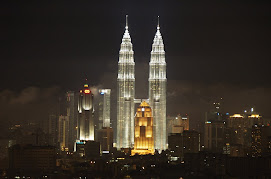This is really a fort of historical value and definitely a must visit for those who like history.
The fort was built in the 1870s and is more than 130 years old. The remains of the fort are well preserved. The 2-storey building is now a museum. Entrance is free.
A bit of history :-Kota Ngah Ibrahim is a Malay fort (covers an area of 0.8094 hectares) built by Ngah Ibrahim who was the chieftain of Larut and son of Che Long Jaafar, the first Malay who opened tin mines in the Larut, Matang and Selama areas in 1840. Ngah Ibrahim had to build a fort around the building after violent gang warfare between the Hai San and the Ghee Hin secret societies over mining lands.
He was sent into exile in Seychelles after the British court found him guilty for his part in the murder of the first British Resident of Perak, James Wheeler Woodford Birch. His appeal to return to Perak was rejected by the British and was laster sent to Sarawak and then to Singapore. Ngah Ibrahim never got to return to Perak for all his natural life. He died in Singapore on 4 February, 1887.

View of Kota Ngah Ibrahim - A building, consisting of an area enclosed by a strong wall, in which he lived and which is designed to be defended from attack.

View of Kota Ngah Ibrahim - A building, consisting of an area enclosed by a strong wall, in which he lived and which is designed to be defended from attack.

The strong wall built around the building to keep out the gang warfare. Remind me of the Berlin Wall in Germany.

What remains of the fort. Some section of walls, near the front entrance gate and the back gate had collapsed.



Children playing in a hideout inside the fort.

One of the three underground wells.

The grave of Ngah Ibrahim.

One of the two Japanese Memorial Stones.

An elephant statue welcome you as you enter the building.

Ngah Ibrahim's office located in one of the rooms upstairs.

Ngah Ibrahim's bedroom is also located upstairs.

The court room.

The prison cell located at the ground floor.

Chinese labourers were brought in from China by the British to work at the Larut tin mines.

After Ngah Ibrahim's death, the building was put under the British administration.

During the Japanese occupation in 1941, the Japanese Imperial Army made the fort its headquarters and war strategic operations centre.




































No comments:
Post a Comment